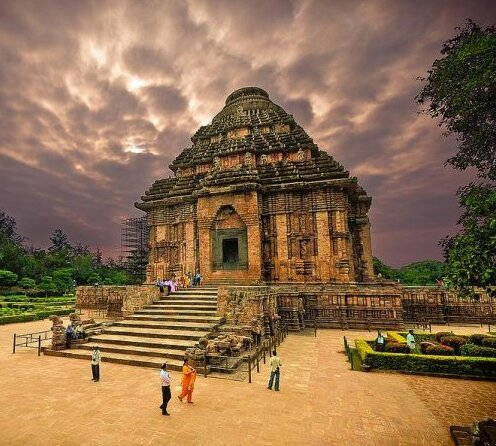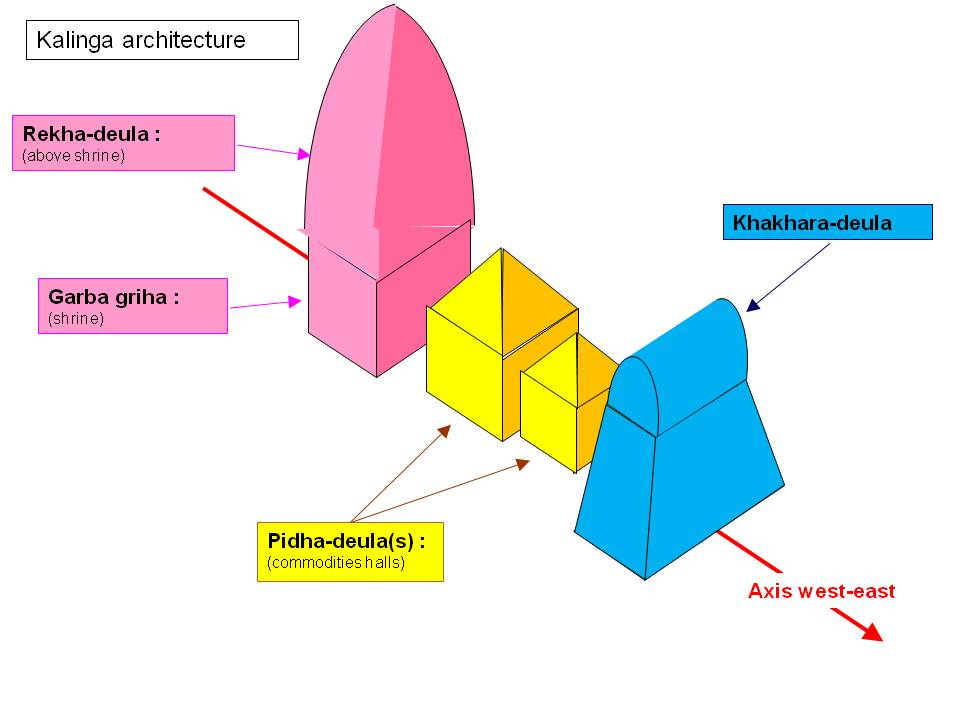Indian History
Conservation of Konark Sun Temple: Odisha
- 30 Dec 2021
- 6 min read
For Prelims: Archaeological Survey of India (ASI), Konark Sun Temple, King Narasimhadeva I, Kalinga Architecture, UNESCO world heritage site
For Mains: Konark Sun Temple, Kalinga Architecture, Ganga Empire, Indian Culture - Salient aspects of Art Forms, Architecture from ancient to modern times.
Why in News
Recently, the Archeological Survey of India (ASI) has revealed it is working on a preliminary roadmap to safely remove sand from the interiors of Konark Sun Temple.
- The sand was filled over a century ago by the British in Jaga Mohan (assembly hall) of the Sun Temple for the stability of the temple.
Key Points
- Conservation Process:
- The British administration in 1903 had filled the hall with sand and sealed it in order to maintain the durability of the thirteenth-century world heritage site.
- They had made hole on the top portion of the Jaga Mohan and poured the sand through that.
- The need to remove the sand was felt after a study warned of possible damage caused by the sand settling down — resulting in a gap of 17 feet between the sand layer and the structure.
- To carry out the sand-removing process, ASI is going to be assisted by the Central Building Research Institute (CBRI) at Roorkee, which had done a scientific study on the temple’s structural stability between 2013 and 2018.
- The British administration in 1903 had filled the hall with sand and sealed it in order to maintain the durability of the thirteenth-century world heritage site.
- About Konark Temple:
- Konark Sun Temple, located in the East Odisha near the sacred city of Puri.
- Built in the 13th century by King Narasimhadeva I (AD 1238-1264). Its scale, refinement and conception represent the strength and stability of the Eastern Ganga Empire as well as the value systems of the historic milieu.
- The Eastern Ganga dynasty also known as Rudhi Gangas or Prachya Gangas.
- It was the large Indian royal dynasty in the medieval era that reigned from Kalinga from as early as the 5th century to the early 15th century.
- The beginnings of what became the Eastern Ganga dynasty came about when Indravarma I defeated the Vishnukundin king.
- The temple is designed in the shape of a colossal chariot.
- It is dedicated to the sun God.
- The Konark temple is widely known not only for its architectural grandeur but also for the intricacy and profusion of sculptural work.
- It marks the highest point of achievement of Kalinga architecture depicting the grace, the joy and the rhythm of life in all its wondrous variety.
- It was declared a UNESCO world heritage site in 1984.
- There are two rows of 12 wheels on each side of the Konark sun temple. Some say the wheels represent the 24 hours in a day and others say the 12 months.
- The seven horses are said to symbolise the seven days of the week.
- Sailors once called this Sun Temple of Konark, the Black Pagoda because it was supposed to draw ships into the shore and cause shipwrecks.
- Konark is the invaluable link in the history of the diffusion of the cult of Surya, which originating in Kashmir during the 8th century, finally reached the shores of Eastern India.
- Other Important Monuments in Odisha:
Kalinga Architecture
- About:
- The Indian temples are broadly divided into Nagara, Vesara, Dravida and Gadag styles of architecture.
- However, the temple architecture of Odisha corresponds altogether to a different category for their unique representations called Kalinga style of temple architecture.
- This style broadly comes under the Nagara style.
- The Architecture:
- In Kalinga Architecture, basically a temple is made in two parts, a tower and a hall. The tower is called deula and the hall is called jagmohan.
- The walls of both the deula and the jagmohan are lavishly sculpted with architectural motifs and a profusion of figures.
- The most repeated form is the horseshoe shape, which has come from the earliest times, starting with the large windows of the chaitya-grihas.
- It is the deula which makes three distinct types of temples in Kalinga Architecture:
- Rekha Deula.
- Pidha Deula.
- Khakhara Deula.
- The former two are associated with Vishnu, Surya and Shiva temples while the third is mainly with Chamunda and Durga temples.
- The Rekha Deula and Khakhara Deula houses the sanctum sanctorum while the Pidha Deula constitutes outer dancing and offering halls.






